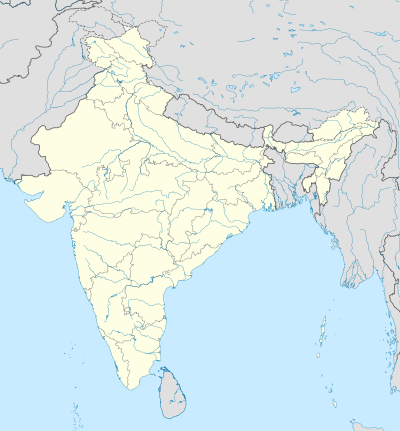This article needs to be updated. (September 2023) |
Nuclear power is the fifth-largest source of electricity in India after coal, gas, hydroelectricity and wind power. As of November 2020[update], India has 23 nuclear reactors in operation in 8 nuclear power plants, with a total installed capacity of 7,380 MW.[1][2] Nuclear power produced a total of 43 TWh in 2020–21, contributing 3.11% of total power generation in India (1,382 TWh).[3] 10 more reactors are under construction with a combined generation capacity of 8,000 MW.
In October 2010, India drew up a plan to reach a nuclear power capacity of 63 GW in 2032.[4] However, following the 2011 Fukushima nuclear disaster, there have been numerous anti-nuclear protests at proposed nuclear power plant sites.[5] There have been mass protests against the Jaitapur Nuclear Power Project in Maharashtra and the Kudankulam Nuclear Power Plant in Tamil Nadu, and a proposed large nuclear power plant near Haripur was refused permission by the Government of West Bengal.[5] A Public Interest Litigation (PIL) has also been filed against the government's civil nuclear programme at the Supreme Court.[5][6]
Nuclear power in India has suffered from generally low capacity factors. As of 2021, the lifetime weighted energy availability factor of the Indian fleet is 66.1%.[7] However, capacity factors have been improving in recent years. The availability factor of Indian reactors was 74.4% in the years 2019–2021.[8] One of the main reasons for the low capacity factors is lack of nuclear fuel.[citation needed]
India has been making advances in the field of thorium-based fuels, working to design and develop a prototype for an atomic reactor using thorium and low-enriched uranium, a key part of India's three stage nuclear power programme.[9]
- ^ "Kudankulam nuclear plant begins power generation". Mumbai Mirror. 22 October 2013. Retrieved 29 January 2014.
- ^ "India Installed Capacity" (PDF). Archived from the original (PDF) on 20 May 2018. Retrieved 5 June 2018.
- ^ "Home". Nuclear Power Corporation of India Limited. Retrieved 8 March 2022.
- ^ "India eyeing 64,000 MW nuclear power capacity by 2032: NPCIL". The Economic Times. 11 October 2010.
- ^ a b c Siddharth Srivastava (27 October 2011). "India's Rising Nuclear Safety Concerns". Asia Sentinel.
- ^ Ranjit Devraj (25 October 2011). "Prospects Dim for India's Nuclear Power Expansion as Grassroots Uprising Spreads". Inside Climate News.
- ^ "PRIS - Lifetime factors - Energy Availability". pris.iaea.org. IAEA PRIS. Retrieved 9 October 2022.
- ^ "PRIS - Last three years factors - Energy Availability". pris.iaea.org. IAEA PRIS. Retrieved 9 October 2022.
- ^ Pham, Lisa (20 October 2009). "Considering an Alternative Fuel for Nuclear Energy". The New York Times.
